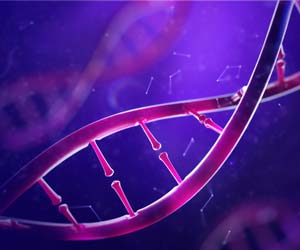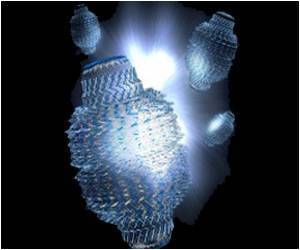Nanopore technology is reshaping diagnostics- early detection, protein insights, and the promise of compact diagnostic kits for a healthier future.
- Nanopores detect single molecules, offering unprecedented sensitivity for faster and more accurate disease diagnosis
- The technology enables protein sequencing, distinguishing healthy from disease-causing proteins for personalized treatments
- Nanopores may soon power affordable, portable diagnostic kits, revolutionizing healthcare accessibility
Negative memory capacitance and ionic filtering effects in asymmetric nanopores
Go to source). Because the molecules scientists wish to detect, which are often DNA or protein molecules, are just one billionth of a meter across, the electrical signals they generate are extremely small and necessitate the use of specialized detection tools. "At the moment, detecting illnesses requires millions of molecules. We're demonstrating that it's possible to obtain useful data from a single molecule," said Kevin Freedman, assistant professor of bioengineering at UCR and lead author of a study about the instrument in Nature Nanotechnology. "This level of sensitivity could make a real difference in disease diagnostics."
Nanopores revolutionize diagnostics with single-molecule precision- catch diseases earlier, sequence proteins, and enable personalized medicine. #innovation #medindia’
Neuro-Inspired Sensors: Detecting Molecules One Ion at a Time
Freedman's lab intends to create electronic detectors that function like neurons in the brain and can remember which molecules have passed through the sensor. To do this, UCR scientists created a novel circuit model that compensates for minor variations in the sensor's behavior.At the heart of their circuit is a nanopore, a tiny aperture through which molecules flow one at a time. Biological samples are introduced into the circuit, coupled with salts that dissociate into ions.
Protein or DNA molecules from the sample pass through the pore, reducing the amount of ions that can pass. "Our detector measures the reduction in flow caused by a protein or bit of DNA passing through and blocking the passage of ions," said Freedman.
To examine the electrical signals generated by the ions, Freedman advises that the system accounts for the possibility that certain molecules would not be recognized when they pass through the nanopore.
Nanopore Breakthrough: Filtering Noise, Amplifying Early Diagnoses
What separates this discovery is that the nanopore not only serves as a sensor but also as a filter, minimizing background noise from other molecules in the sample that could conceal vital information.Traditional sensors require external filters to remove extraneous signals, and these filters may unintentionally remove useful information from samples. Freedman's technique preserves each molecule's signal, increasing diagnostic accuracy.
Freedman anticipates the technology being used to create a compact, portable diagnostic kit- no bigger than a USB drive- that can detect viruses in their early stages. While current tests may not detect infections for many days after exposure, nanopore sensors could detect infections in 24 to 48 hours. This skill would provide a considerable benefit for diseases that spread quickly, allowing for early intervention and treatment.
"Nanopores offer a way to catch infections sooner- before symptoms appear and before the disease spreads," according to Freedman. "This kind of tool could make early diagnosis much more practical for both viral infections and chronic conditions."
Nanopores Pave the Way for Protein Sequencing and Personalized Medicine
In addition to diagnostics, the device shows promise for enhancing protein research. Proteins have critical roles in cells, and even minor structural variations can have an impact on health. Because of their similarities, current diagnostic methods find it difficult to distinguish between healthy and disease-causing proteins. However, the nanopore gadget can detect small variations between individual proteins, potentially allowing doctors to build more tailored medicines.The study also moves scientists closer to obtaining single-molecule protein sequencing, a long-term goal in biology. While DNA sequencing discloses genetic instructions, protein sequencing offers information about how those instructions are expressed and modified in real-time. This deeper understanding may lead to earlier illness detection and more precise therapy tailored to each patient.
"There's a lot of momentum toward developing protein sequencing because it will give us insights we can't get from DNA alone," Freedman told reporters. "Nanopores allow us to study proteins in ways that weren't possible before."
Nanopores Bring Personalized Medicine Within Reach
The National Human Genome Research Institute has awarded Freedman a sponsored research project to investigate nanopores, with the goal of sequencing single proteins. This study expands on Freedman's past work on improving the use of nanopores to detect chemicals, viruses, and other nanoscale things. He sees these achievements as a hint of how molecular diagnostics and biological research will evolve in the future."There's still a lot to learn about the molecules driving health and disease," Freedman told reporters. "This tool moves us one step closer to personalized medicine."
Freedman believes that nanopore technology will soon become a standard element in research and healthcare instruments. As the gadgets grow more affordable and accessible, they may find a place in standard diagnostic kits used at home or in clinics.
"I'm confident that nanopores will become part of everyday life," Freedman told reporters. "This discovery could change how we'll use them moving forward."
Reference:
- Negative memory capacitance and ionic filtering effects in asymmetric nanopores - (https://www.nature.com/articles/s41565-024-01829-5)
Source-Medindia












